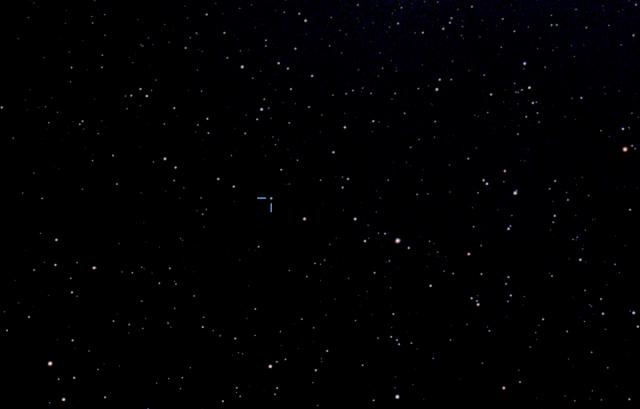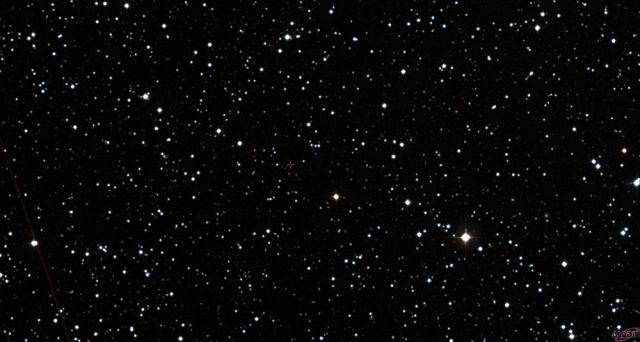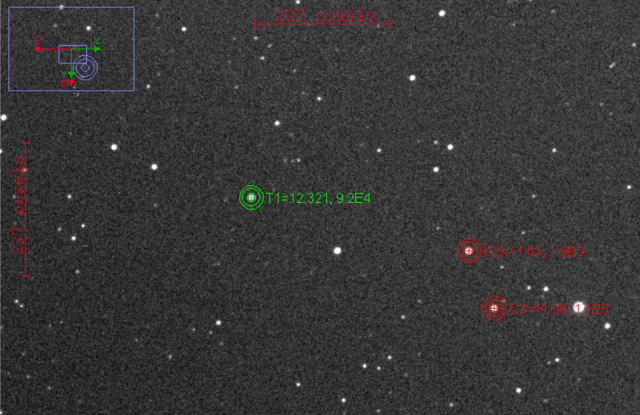› Forums › Variable Stars › New Dwarf Nova in Gemini
- This topic has 7 replies, 4 voices, and was last updated 3 years, 11 months ago by
 Gary Poyner.
Gary Poyner.
-
AuthorPosts
-
29 December 2021 at 4:14 pm #575126
 Gary PoynerParticipant
Gary PoynerParticipantVSNET-alert 26492 issued on December 28 reports the discovery of a large outburst amplitude (7.7 magnitudes) transient in Gemini, discovered by “Tadashi Kojima, Tsumagoi,Gunma-ken, Japan, on three frames(5_s exp) under limiting mag.= 14.2 taken by Canon EOS 6D + 200mm f/3.2 lens. Nothing is visible at this location taken on 2021 Dec14.741 UT under limiting mag.= 14.0. Mag=13.5 on 2021 Dec28.610UT with same instrument.”
Position 07 09 49.36 +14 12 28.0
The object ‘may’ be a new UGWZ type Dwarf Nova.
A SLOOH image taken on Dec 29.037 revealed a magnitude of 12.15CV.
Please use the desigation TCP J07094936+1412280 when reporting to either the BAAVSS or AAVSO. An AAVSO chart and sequence is available from the AAVSO VSP.
Gary
29 December 2021 at 10:41 pm #585053 David SwanParticipant
David SwanParticipantConditions weren’t great – certainly not photometric quality – but I imaged the field and the image gives a ballpark indication of brightness (certainly consistent with Forth’s obs). Midpoint 2021-12-29T21:44. PA 297deg; 80′ x 60′.
29 December 2021 at 10:55 pm #585054 Mark PhillipsParticipant
Mark PhillipsParticipantJust for reference, I believe this is correct. My image:

From Aladin
 29 December 2021 at 11:41 pm #585052
29 December 2021 at 11:41 pm #585052 Mark PhillipsParticipant
Mark PhillipsParticipantI believe it’s this one and AstroImageJ gives me a V mag of 12.3.

Taken this evening 29-12-2021 21:55 UT
3x180s subs stacked
250mm f4.8 Newtonian
QHY168C – green channel onlyMark Phillips
Edinburgh30 December 2021 at 12:44 pm #585059 David SwanParticipant
David SwanParticipantI estimated the brightness at about 12.595 CV, with a delta for the check* star (*corrected) of 0.021.
 30 December 2021 at 12:53 pm #585055
30 December 2021 at 12:53 pm #585055 Denis BuczynskiParticipant
Denis BuczynskiParticipantImage of this object taken 20211230 0153 at Tarbatness. Image is south up and west left

 1 January 2022 at 3:02 pm #585062
1 January 2022 at 3:02 pm #585062 Mark PhillipsParticipant
Mark PhillipsParticipantVery poor conditions tonight with drifting cloud and only enough gaps for 30s exposure, but clearly fainter.
AstroImageJ gives 13.1 V now.At 2021-12-31 23:31UT
8 January 2022 at 4:29 pm #585102 Gary PoynerParticipant
Gary PoynerParticipantEleven days into the outburst, this dwarf nova of the relatively rare type UGWZ is still fairly bright in the evening sky after fading by just over two magnitudes since discovery, and remains worthy of continued observation – visual, single image or time series.
My own light curve consiting of visual observations from Birmingham and CCD images from COAST and SLOOH is shown below.

Gary
-
AuthorPosts
- You must be logged in to reply to this topic.
